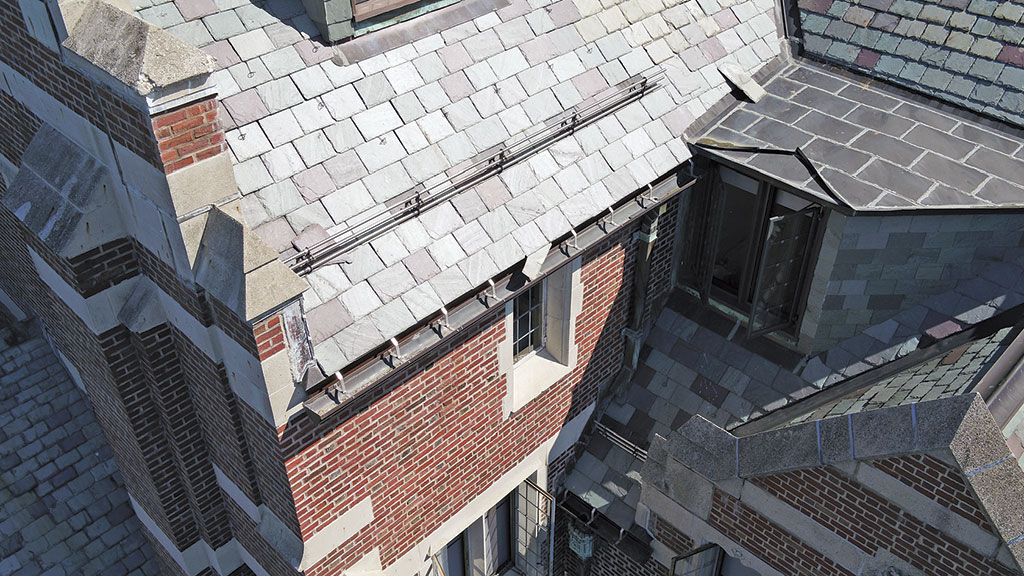Change Is Still “Up in the Air”
By Melinda Sokoloski
Introduction

In recent years, unmanned aerial vehicles (UAVs, colloquially known as drones) have seen a rapid increase in technical innovation of concern to the building enclosure community. At times, development has inundated parties with information on how the devices can aid in research and testing. The remote sensing community has changed and grown with the capabilities of the crafts over the last few years. Pilots are extremely skilled, with a deep knowledge of the building enclosure and necessary inspection deliverables. The latest generation of UAV technology now means that looking at a 200-ft.-high dome in real time from an office thousands of miles away is a reality. Architects, engineers, and consultants have progressed past the understanding that drones could reach difficult areas or elevations that pose safety risks to inspectors. Previous options utilized swing stages, façade drops, and bosun chairs, as well as platform lift trucks with ground-based binoculars. These tools are no longer the only options in an urban setting.
Initially, there were few codified safety regulations of UAVs by the Federal Aviation Administration (FAA) at the national level and even fewer at the local level. Prior to 2015, deciphering the regulations was cumbersome and fraught with unclear specifics as to their use. Pilots are now aware of airspace, altitude, and geographical limitations and new scrutiny around craft registration and licensure to fly and profit commercially. Today, a modern app (B4UFLY) can be used on any smart device to request FAA clearance, incorporating specifics of flight region, height, and radio interference (Figure 1). Drone suppliers have imposed their own regulations, including geofencing, altitude limits, and firmware limitations that require the pilot to obtain a software license to unlock the ability to fly in certain zones at the expense of identity. National laws describe basic rules, such as minimum age for flying and the need to pass the Aeronautical Knowledge test (known as the Part 107 test). It should be noted that each state has individual drone laws which can be accessed online.
Five years ago, my colleague, William “Bill” Waterston, a member of IIBEC, wrote an article and presented a paper on drone use at the 2015 RCI Building Envelope Symposium. Waterston’s article examined where drones might best be used within the façade inspection industry. The article was optimistic and filled with new ideas on how engineers and architects could revolutionize the building enclosure inspection process. This article will explore the enhancements made in the drone arena in the intervening years that specifically benefit the building enclosure community.
[Editor’s note: IIBEC’s new Manual of Practice also includes a section on “Drone Use.”]
